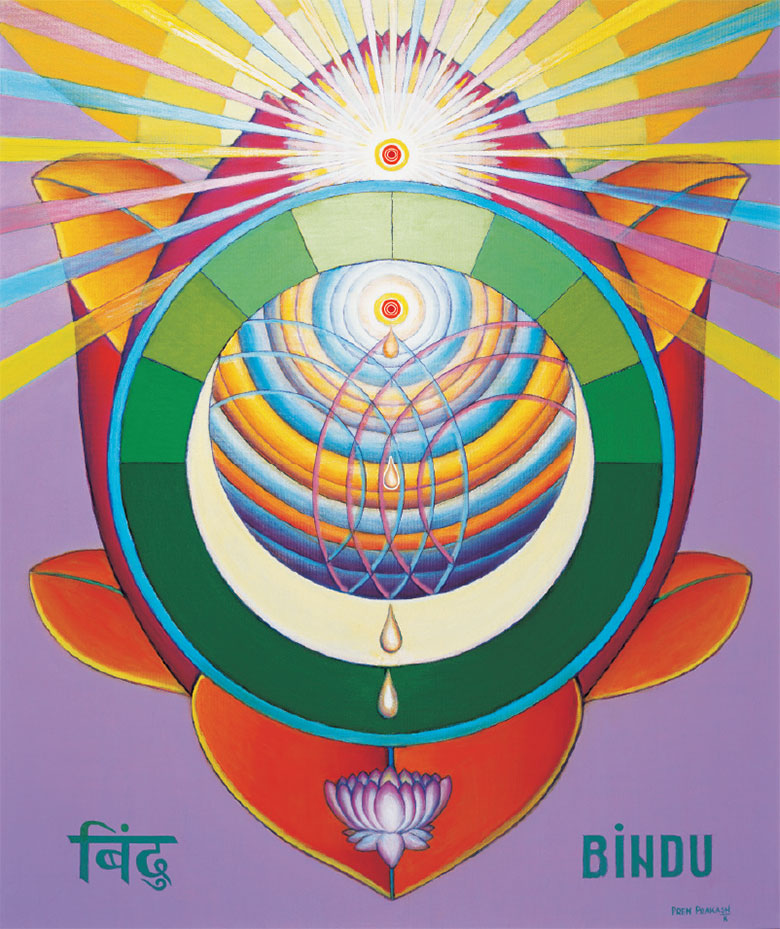
Bindu = point, drop
The Bindu Chakra is situated beneath the whirl of hair at the tip of the head. In the picture of the Bindu is a Lotus with twenty-three petals. Its symbol is the moon, which supports the growing of vegetation. Lord Krishna said: “Becoming the nectarine moon I nourish all plants” (Bhagavad Gita XV/13). Its Divinity is Lord Shiva, who is always portrayed with the crescent moon in his hair. The Mantra is SHIVOHAM. This Chakra is colourless and transparent.
The Bindu Chakra is an important centre for health, giving us the power for physical and mental recuperation. This Chakra benefits eyesight, quietens the emotions and promotes inner harmony, clarity and balance. With the help of this Chakra we are capable of controlling hunger and thirst and gain the ability to overcome unhealthy eating habits. Concentration on the Bindu relieves anxiety and depression, nervousness and also feelings of oppression in the heart.
The Bindu Chakra bestows physical and mental health, vitality and youthfulness, because it produces “the nectar of immortality” (Amrita). This nectar usually drops into the Manipura Chakra where it is burned by the digestive fire without being fully utilised by the body. For this reason the Rishis of ancient times sought a method to collect this valuable nectar and discovered that the flow of nectar can be arrested with the help of the tongue and Vishuddhi Chakra. The tongue contains subtle energy centres, each corresponding to an organ or area of the body. In the Yoga techniques of Ujjayi Pranayama and Khechari Mudra, the tongue curbs the flow of nectar and stores it in the Vishuddhi Chakra. Like a homeopathic medicine it is then redistributed throughout the whole body via the subtle energy channels, where its healing effects unfold.
More about Exercises and Meditations for Bindu Chakra read here.